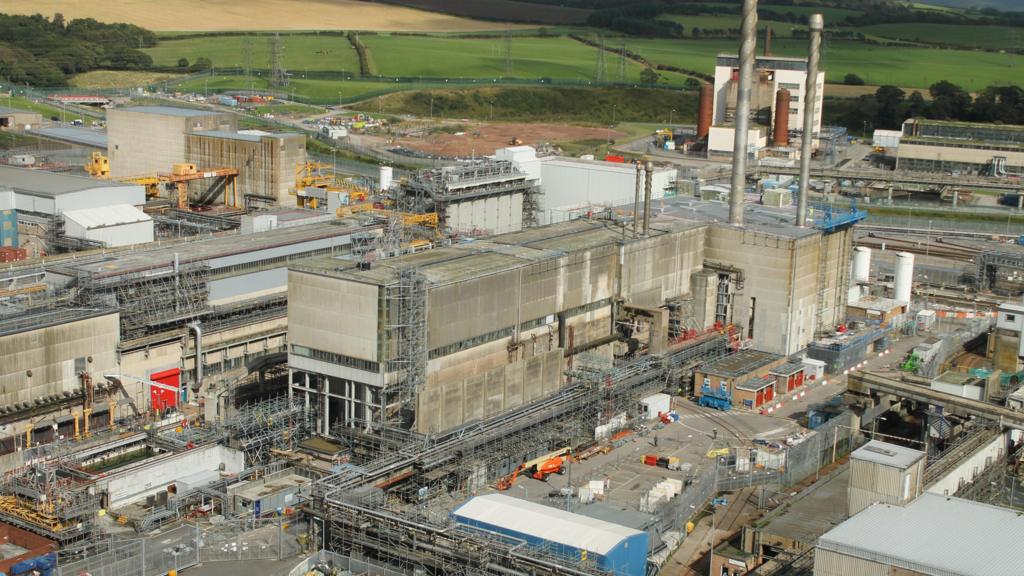The UK’s largest nuclear site, Sellafield, may experience radioactive water leakage until the 2050s, according to a recent parliamentary warning. The ongoing cleanup efforts are facing significant challenges.
The Public Accounts Committee (PAC) sharply criticized the slow pace of decommissioning at Sellafield in Cumbria, highlighting “cost overruns and persistent safety concerns” in a report released Wednesday. While acknowledging some progress, PAC chair Sir Geoffrey Clifton-Brown emphasized that Sellafield continues to pose “unacceptable risks”.
The Nuclear Decommissioning Authority (NDA) identified the leak at its Magnox Swarf Storage Silo (MSSS) as its most pressing environmental problem.
The NDA termed the MSSS, “the most hazardous building in the UK,” has leaked radioactive water into the ground since 2018, accumulating enough to fill an Olympic-sized swimming pool every three years.
This leakage is projected to continue until the oldest section of the building is emptied in the 2050s, a decade later than initially anticipated.
Sir Geoffrey stated, “The sheer scale of this century-long decommissioning project obscures the immediate safety risks and cost overruns caused by delays, mirroring the climate change challenge.”
“Sellafield faces a constant race against time to complete work before buildings reach the end of their lifespan. Our report reveals concerning signs that Sellafield risks losing this race.”
Noting Sellafield Ltd’s failure to meet most annual waste retrieval targets, including for the MSSS, the committee warned: “This underperformance will likely prolong the buildings’ hazardous state.”
An NDA spokesperson assured that “the leak in the Magnox Swarf Storage Silo is contained and poses no public risk.” They added, “Regulators concur that the current plan to address the leak is optimal.”
Sir Geoffrey stressed the critical need for the government to address the immediate urgency of Sellafield’s work, rejecting any complacency about distant deadlines.
“Sellafield’s risks are present and immediate. While some initial improvements are noted in our report, the government must enhance accountability to ensure these aren’t false dawns, protecting both public funds and safety.”
Sellafield, which ceased power generation in 2003, now processes and stores UK nuclear waste, alongside site cleanup operations.
The government plans an underground geological disposal facility (GDF) for long-term waste storage, but delays, pushing completion to the late 2050s, will increase Sellafield’s costs, the committee stated.
NDA CEO David Peattie welcomed the report, stating they take the “findings seriously, prioritizing site safety and personnel wellbeing.” He noted the committee’s recognition of project delivery improvements and safe waste retrieval from high-hazard facilities.
The PAC expressed concern over a “suboptimal culture” at Sellafield, urging the NDA to include bullying prevalence data in its annual report. The NDA spokesperson affirmed their commitment to a respectful work environment and actions taken to improve it, including strengthening whistleblower protections.
The Department for Energy Security and Net Zero emphasized the expectation of “highest safety and security standards during dismantling of former nuclear sites, ensuring public safety is not compromised at Sellafield”. They highlighted monthly performance reviews and increased oversight to enhance scrutiny and intervention, along with zero tolerance for workplace bullying.
Follow BBC Cumbria on X, Facebook, Nextdoor and Instagram.
Jessica Thorpe, who runs the Slice of Jess channel, is to get compensation for her unfair dismissal.
The mother of Jaysley Beck says others have shared “heartbreaking” experiences with her.
Lincolnshire County Council will withdraw from talks about a potential disposal site near Louth.
Cumbrian mountain rescuers praise two people who used a 999 text service to locate a missing boy.
Cumbria Tourism says employers worry about the consequences of a potential rise in transport costs.

